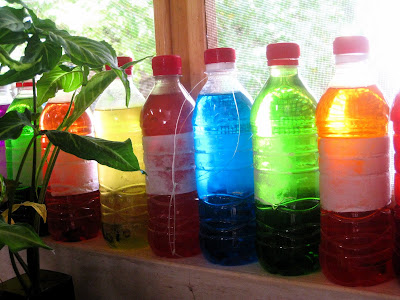
When I visit a school or classroom, I never focus on the negative. In any institution we can always find many things to complain about. In every school around the world, there are good teachers doing often extraordinary work. If we pay attention, if we take the time to look, we can learn lessons that might help us to be better teachers in our own classrooms. This space is a way for me to share some of these practices I am discovering in Mexico and in other educational spaces around the world.
Loyola is a wonderful school here in Merida, Mexico. It was founded by a group of parents who were frustrated with the other schools in this community. Most of the public and private schools here adhere to the old model of education that views the teacher as the font of information, standing in front of the classroom, lecturing and checking to see if the students have adequately memorized the facts. In one school we recently visited, the principal of the school walked into the classroom, all of the students respectfully stood at their chairs. The principal announced "You may be seated." He then began to call on students, one at time, at which point each student quickly jumped out of his seat. The principal noticed they were studying math, so he began to ask respective student a series of questions related to geometry, "How many sides does a trapezoid have?" He gave a disapproving look to those students who got the answer wrong, and said something like "Good, Ana" to those who answered correctly. The students were rightly terrified.
I do believe we need access to information to make informed decisions, and as a former director and actor, I admire the ability to memorize information, poems, and facts, but to shape our entire education system around discrete bits of information, particularly today in the digital age when we can access all the information we need, quickly and easily, seems ludicrous.
However, at Loyola, the students were often huddled around a project, working together, towards a collaboratively decided solution. Parents started the school and so the school is governed by parent work groups, each with a different focus--community outreach, green spaces, sustainable ecology, student recruitment, and curriculum--to name a few. But it wasn't in the large vision that I was most focused on, but rather the details that, when added up, make up a school. In the previous two posts I mentioned two, but there is another worth noting: trash turned into art.
The art teacher at the school Regina said to me, "We don't throw away anything, we reuse everything, and make art out of it." A group of teachers and I were visiting classrooms and we noticed plastic bottles lined up on windowsills and bookshelves, all filled with different colored water. We asked the art teacher what they were for and she responded, "That's an example of how we reuse everything. As the year progresses students based on their contribution to the community, earn first the bottle cap, then the bottle, then finally they fill the bottle up with water of their favorite color. Finally, the students choose a tree in the area in the courtyard to hang their bottle on." She pointed out the window.
Next to the art room was a little courtyard, with a garden the students had planted, and sure enough, trees filled with glistening bottles of water.